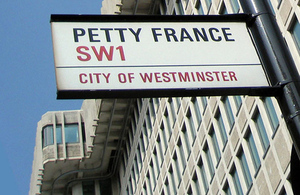Framework for the provision of lifts & lift refurbishment across the MoJ
3 SMEs provided a framework for the supply and refurbishment of lifts in MoJ buildings.

Case study
Name of company:
- Axis Elevators
- ANSA Elevators
- Guideline Lift services
Contract title:
Framework for the provision of lifts & lift refurbishment across the Ministry of Justice estate.
Brief company details:
All 3 appointed to the framework are small lift contractors with the ability to refurbish and fit new lift installations. Axis Elevators have a turnover £10 million with approximately 70 staff; ANSA Elevators have a turnover of £8 million with approximately 60 staff; Guideline Lift services have a turnover of £10 million with approximately 85 staff.
Contract summary and highlights:
Previously, the provision of new lifts and the refurbishment of those lifts were carried out by a main contractor, subcontracted to a specialist lift contractor. By setting up specialist lift frameworks (one in the North and one in the South) this has provided the MoJ with the ability to break down the requirement, avoid layered profit and central office overheads and also provides flexibility for project delivery by dealing direct with the SME.
Did publishing the procurement pipeline result in an increase in SME participation?
Yes. The transparency of the requirement did widen the interest amongst SMEs that had not been involved before.
Did pre market engagement occur, and if so what impact did it have on the procurement strategy? Were SMEs involved in the pre market engagement?
Yes pre-market engagement was held and this provided an opportunity for MoJ to detail the requirements and entry criteria as well as allowing companies to ask questions.
As this was a two-way feedback, this impacted the procurement strategy in the following areas:
- Tendering time: 6 weeks
- Regional Sourcing: two regions rather than a national were better.
- Long lead items: SME advise lead time 12 weeks for machinery & doors.
- Insurance levels: advised at PII was better at £2 million, other insurances were ok.
- Minimum turnover: £1m for refurbishment would suffice.
- Pricing requirements: MoJ were required by SMEs to provide as much detail as possible including travel distances, loads, etc.
- Optimum batch size: competing programmes would help the industry and will provide better value for money.
- Options: the industry advised that the option for traction is best as its normally used.
- Hydraulic is not used for now, but it is recommended to keep as an option as there could still be some in the older estate.
- IPR: SMEs mentioned that in order to avoid being tied to a manufacturers product, it will be wise to not specify 3rd party equipment as this will provide best value for money.
- Retentions: the industry advised that retentions are rarely used in Lift Association.
How did we make the decision on the optimal lot size? Were SME views taken into account?
The SMEs views on whether to source regionally and whether to compete a programme of works were key messages received and discussed and fed into the procurement strategy.
Were tangible savings delivered as consequence of SME involvement/re view of lot size?
The framework is in its infancy and so no savings realised yet.